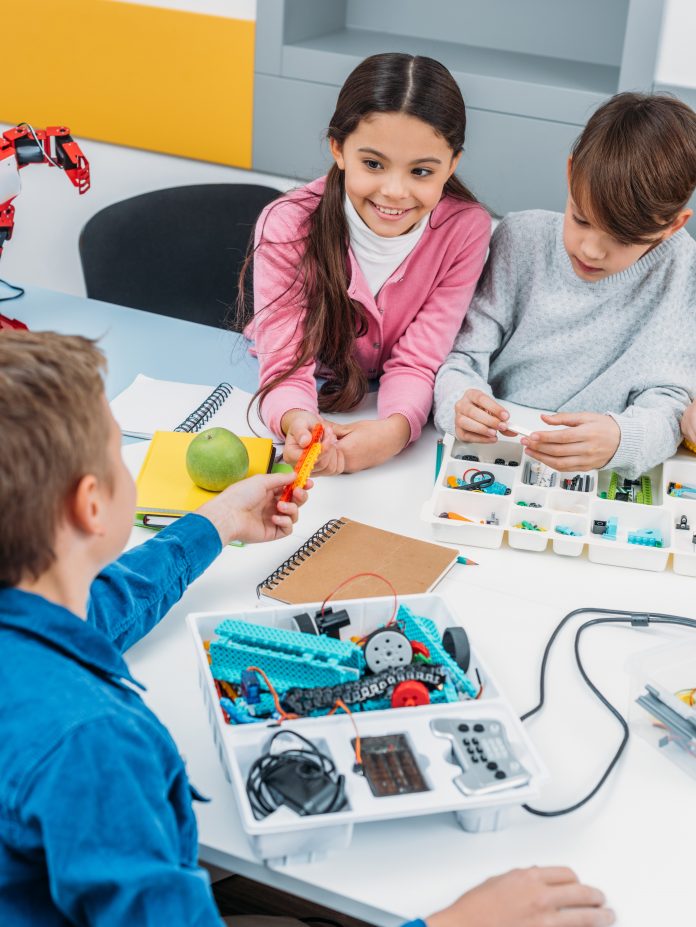Through lessons that include hands-on learning, STEM teaching shows how various subjects are interconnected and make up the world around us.
Rajalakshmi Padmanabhan
We study different subjects at school and think of them as distinct from one another. Mathematics is about numbers, science is about observation and classification, while engineering is a subject that we begin to study only at the college level. A STEM lesson tries to remind us how these subjects are interconnected and are different aspects of real-life projects. STEM is an acronym for Science, Technology, Engineering and Mathematics.
When teachers take up a STEM project they teach students not just one of these subjects, but two or more in one lesson. This way, a student understands that Engineering is the application of Science and Mathematics.
The student not only gets to know the connection between the real world and what he studies inside his classroom, but also gets to feel connected to his classroom itself because he understands the importance of his lessons.
With this approach, Science, Technology, Engineering and Mathematics are more likely to be looked upon as useful and interesting subjects rather than as ‘difficult subjects’. The project-based approach also makes it an adventure as students make models of simple and compound machines as well as build tiny bridges or mini-robots. Students remember the principles behind their projects forever and spend less time memorising them mechanically.
While this approach has been widely promoted and funded by the government in the United States for over a decade, its significance has only now begun to be recognised in some of the best schools in India as well. As our school boards have not emphasised the importance of doing multidisciplinary projects, it is only in private schools that such experiments have been made.
The Royapettah branch of a reputed school in Chennai successfully completed a project on the high number of malaria cases recorded in a nearby locality. Going door to door, students collected data, interviewed patients, studied the biology of the disease and also
computed the statistics to prepare a report on their project. Such a project makes the students realise that they must develop skills and be good at more than their subject.
Another chain of schools in Bangalore has a STEM-based curriculum. They prepare students for not just board exams, but make them familiar with problem-solving and train them to face challenges. The projects done by students from this chain of schools have won several awards at NASA’s Space Settlement Contest in 2014.
The most encouraging aspect of the STEM approach is that it is adopted not just in the senior classes. A well-known chain of schools operating across Bangalore teaches STEM subjects through projects even at the primary level. If the theme for the term is ‘Water’, students study irrigation, hydro-electricity, water pollution and water conservation. They discuss their activities with their parents. They also become passionate about water conservation at an impressionable age. One such student, Advik of Class Five, decided to stop using the shower for a bath so that he could reduce water consumption. He urges his parents and friends to do the same.
STEM is an approach that improves the impact of education. It makes children grasp their subjects without turning them into bookworms who learn concepts by rote. Also, it makes education appear enjoyable and significant to young minds.







